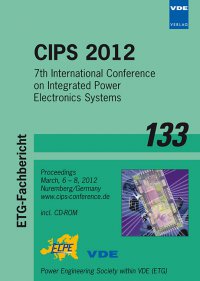New Methods Help Better Evaluate Risks Via Simulation
Konferenz: CIPS 2012 - 7th International Conference on Integrated Power Electronics Systems
06.03.2012 - 08.03.2012 in Nuremberg, Germany
Tagungsband: CIPS 2012
Seiten: 5Sprache: EnglischTyp: PDF
Persönliche VDE-Mitglieder erhalten auf diesen Artikel 10% Rabatt
Autoren:
Schingale, Angelika; Wolf, Daniela; Schießl, Andreas (Continental Automotive GmbH, Germany)
Tarnovetchi, Marius (Automotive Romania Srl, Romania)
Inhalt:
Quite a few tasks focusing on failures of electronic components caused by vibrations have shown that a satisfactory depth of problem analysis cannot be achieved with existing problem-solving methods. Thus, new options supported by computing power have been investigated which make evaluating the stress and reliability of electronic components subject to vibrations faster and more reliable. The paper will give insight into an innovative approach for reliability analysis of electronic components subject to vibration. In order to evaluate the risks from vibration stress to a PCB at the beginning of a project, or even better before, more refined methods are required than those that have been available until now. Sound assumptions from an FEM-based "quick predict" tool should help filling in the gaps during early stages and prevent additional work, higher costs, and even field returns later on. Since the quality of a vibration simulation primarily depends on the quality of the material data, this data needs to be collected. To do so, frequency-dependent material damping models are determined using application-fitting testing arrangements, and then subsequently compared using an appropriate simulation. The lifetime of individual components is essential when estimating the reliability of the entire electronic system, and in this case a list ranking the individual components offers assistance. Since the unit’s design has a considerable effect on the actual level of stress in the system, however, it's difficult to determine a generally applicable lifetime for each component. In order to correlate the individual components to one another anyway, the elements are studied using a specifically developed test in coherence with component suppliers. Results are transferred to a database and continuously expanded. Typically, the request of engineering a new electronics system running in harsh environments includes a number of risky assumptions to be made, which today are based on past experience. A system for experts to use for supporting and quantifying these values is closing the gap. To eventually create such a system, we work in close cooperation with university partners.


